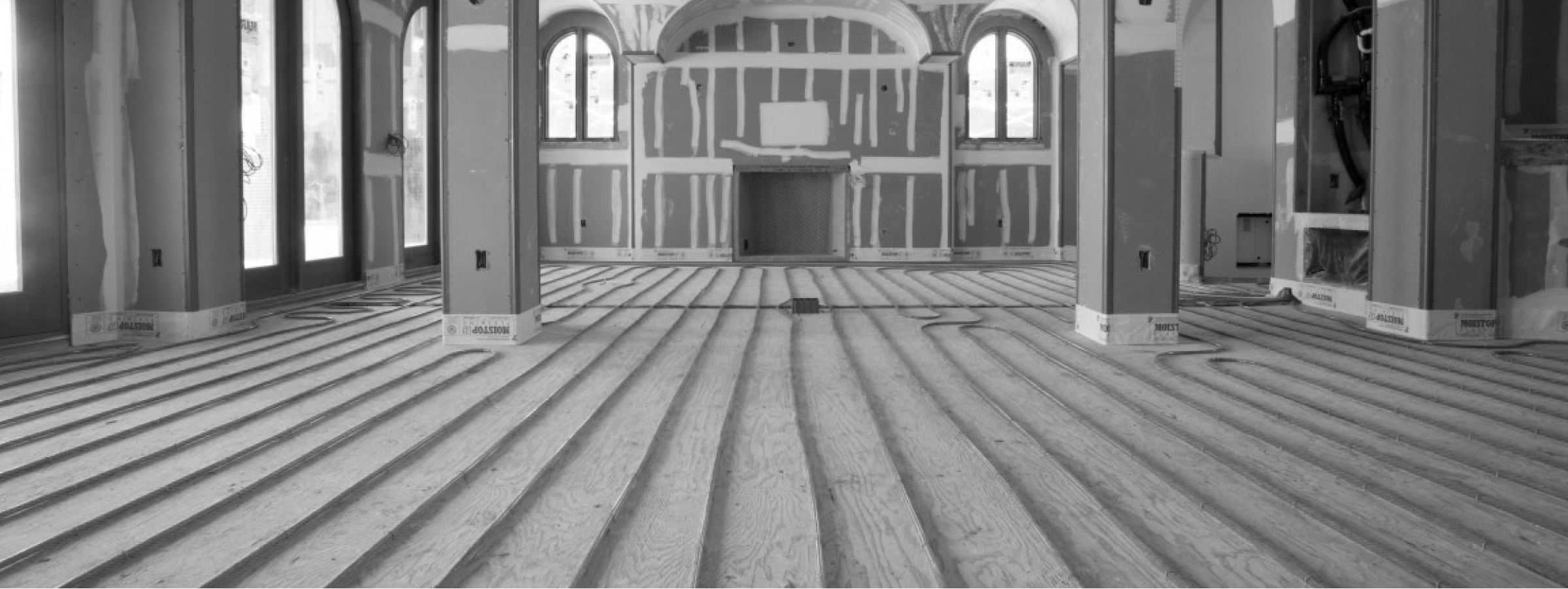Radiant heating heats objects like the furniture, the drapes, the dog, and you. We are big fans of radiant heat and have been installing both kinds, forced hot water, and electric since it became popular about 15-20 years ago. In whole house renovations, the walls and ceilings are exposed so the opportunity for installing radiant heating is easier and therefore less expensive.
So what are the major difference between forced hot water and electric heat?
Commonly, the whole house systems we install are hot water while electric radiant heat is usually used in bathrooms and smaller spaces. The heat output for electric is less than hot water, so electric radiant heat is not considered to be a stand-alone heat system and is usually supplemented with another heat source. Electric elements are custom ordered to size and come in the form of a sheet with wires which is embedded in the mastic under the bathroom floor tile.
You will pay a premium for hot water radiant heat, but there are many advantages. It eliminates radiators and baseboards, which can open up more space for furniture. It does not push air and dust around and over your body. Even warm air moving across your body in the cold months can feel cold. If you already have a forced hot water system in your house with a relatively newer model boiler, you should be able to retrofit the system to adapt to radiant heat. Some older boilers will need to be replaced.
Some people only renovating kitchens and bathrooms still decide to install hot water radiant. This sets up the home to add radiant in other areas in the future.
Radiant heat is usually installed in plywood panels that have pre-routed grooves the pipes fit into, bringing the pipe flush with the top of the plywood. The finish flooring is applied over the plywood. Reflective aluminum or aluminum panels are used to push the heat up towards the room to be heated. Generally, floor cavities under radiant heat should be insulated. In certain conditions, for instance, if we want to retain the existing finish floor, we will install radiant heat under an existing subfloor, if it is accessible.
Radiant heat tubes can be compromised by nails, screws, etc, though this rarely happens on well-managed job sites. One advantage of the pre-routed plywood system is that the floor installers can clearly see the location of the piping and stay well away from it when nailing down the floor. The modern plastic piping that plumbing and heating contractors use for radiant heating is very tough and durable. We often embed this piping in the basement slabs which is strong enough to have cement trucks drive over it, however, it will not resist the force of a pneumatically driven nail. Sometimes nails can penetrate a pipe and not be detected until years later when the nail rusts out. Penetrations are usually not difficult to locate or repair, but the leaks can cause damage.
In spite of this one potential drawback, and if the budget allows, we highly recommend radiant heat in the renovation or new construction of homes, for a warm and comfortable environment. Most importantly, with radiant heat your feet are warm, and when your feet are warm, you are usually happy.

